R.J. Stowell's Blog: rjsomeone, page 65
July 9, 2018
Selling England
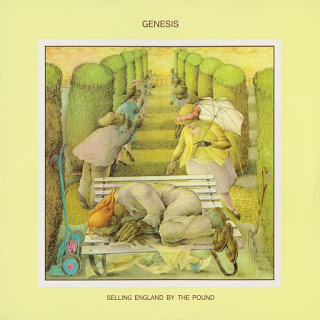 Marching on from Foxtrot, particularly "Supper's Ready," which emphasized the intricate, multi-layered group ideology and musical prowess, Selling England By The Pound was a trip into the English pastoral, an off-beat look at life in the country, swathed in medieval madrigals.
Marching on from Foxtrot, particularly "Supper's Ready," which emphasized the intricate, multi-layered group ideology and musical prowess, Selling England By The Pound was a trip into the English pastoral, an off-beat look at life in the country, swathed in medieval madrigals.The pastoral English sentiment is evident before the first listen. Betty Swanwick's cover art, entitled "The Dream," was a departure from the previous album covers and one that the band were able to manipulate with the addition of a lawnmower and a sense of playfulness and good-natured mischief. ("I solemnly swear that I am up to no good.")
The pervasive question, "Can you tell me where my country lies," is the listener's first encounter; the tone already set, its darker undercurrent revealed. No other album, Genesis or otherwise, kicks off in such a way, offering up a sense of loss, a departure of both post-war innocence, sixties radicalism in the arts and in technology as well as in every-day life, and a foreshadowing of an England to come. The 1970s were a period riven by a state selling itself to the highest bidders, the fundamentals of life, shelter, food, electricity crippling the middle class; bit by bit, England was selling by the pound. The Clash and the punk rock uprising would say it more explicitly just a few years later, but while Yes was rambling on about mystics and philosophy, and Gentle Giant was, well, singing about giants, Genesis reflected a national mood, a mood later expressed so eloquently on ELP's Brain Salad Surgery through William Blake's "Jerusalem" ("And was Jerusalem builded here/ Among these dark satanic mills?").
"Dancing with the Moonlit Knight" is rife with complex glass-darkly overtones bursting to the seams, and serves as a disturbing but grandly painted art work, cerebral in its nature but with all the essence of whimsy thrown in; a suggestion about the British spirit. The second verse of the track imbues the image of England, of the U.K., the town and country placed side by side co-existing in a world that hasn't progressed from the times of Ben Jonson, from the sixteenth century and in which Shakespeare wrote of this other Eden and the sceptered Isle. Gone though were the 1950s and 60s, gone was the prosperity of Post-war Britain; now was a time of harsh reality, the country in decline.

A man hollers from the crowd and claims that the paper is late. The man at the tube station selling The Evening Standard to those making their way home to the suburbs, is nowhere to be found. A cog in the machine is askew, only big news is delayed. The headline captured is that of a man drowned, the suicide note signed Old Father Thames. England is sold down the river. It's but verse two and Gabriel's lyrics are simpler than implied here (and all the more effective):
"Paper late!" cried a voice in the crowd."Old man dies!" The note he left was signed "Old Father Thames."- it seems he's drowned;selling England by the pound.
It is these comical but topical allusions, the small looks at life in the country, which make the album endlessly fascinating. Evermore so, I can only imagine, as an Englishman (fee fi foe that, Gentle Giant). It is also an album that draws once more on the literature in which to find inspiration. Whether through newspaper articles in which gangs in the East-End fought in Epping Forest, the use of the whimsical pun in Aisle of Plenty, in which now with time seems a regretful way of looking at the era or in the utterly compelling The Cinema Show which takes its lead from both The Wasteland and from The Ovid.
It is a complex look of what was Britain was going through and has continued to do since the start of the 70s. Like The Lamb Lies Down On Broadway, Selling England By The Pound is a piece of lyrical wonderment, a licence to be poetic and to be scanned deeply into the meaning of every song, a perfect album in which the art of close reading comes into its own, yet it is Steve Hackett's guitar that gives the album it's deep resonance, its almost sublime beauty throughout, especially on the instrumental track "After The Ordeal" which makes the album one to listen to over and over again.
Others will argue for The Lamb Lies Down on Broadway, but this is Genesis' finest moment.
Mischief Managed
Published on July 09, 2018 04:34
July 8, 2018
Genesis - Nursery Cryme
It's been nearly 50 years since Genesis recorded Nursery Cryme, the album that cemented the early Genesis sound, and one considered by many to be among the finest artistic achievements of progressive rock. In America (for me in L.A. on KMET, fiddle-dee-dee), progressive rock was less a category than something that fit in with Bowie, The Who and Humble Pie (to express the divergence of styles), and the big guns of course were Yes, Jethro Tull and Emerson, Lake and Palmer. The undercurrent, from King Crimson to Gentle Giant, wasn't found on radio, even FM radio, and only in the Phil Collins led era did Genesis hit the airwaves.
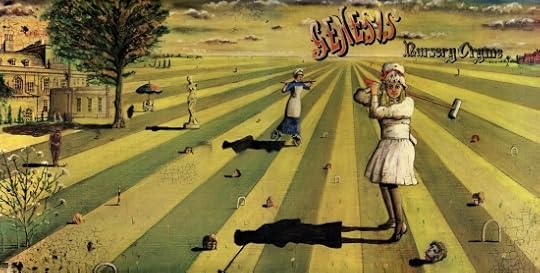
But Genesis pushed the boundaries of rock both lyrically and instrumentally with fantastic, often bizarre lyrics; long, thematic tracks; an obvious classical influence and departure from blues-based traditions; and unparalleled musical virtuosity (and long before Yes and ELP). The band wed the heaviest jams of the day to acoustic, pastoral passages to create a tapestry of light and shade. "Our idea of a guitar-based tune," recalled guitarist Steve Hackett, "usually meant that the 12-string [acoustics] carried it. Often we would have three 12-string guitars playing at once — Mike, Tony and me — which created a sound like a harpsichord, and you couldn't really pin down what you were hearing. Mike Rutherford was very into Joni Mitchell at the time, which also influenced our acoustic side." Hackett, who began his musical journey as a blues harmonica player, continued, "I grew up listening to the blues and Bach, and I never thought that they would meet and create a third thing. The two styles seemed to be at odds with each other."
Nursery Cryme explored odd time signatures, modal compositions, and introduced a new technique to rock music that would redefine electric guitar playing in the next decade: two-handed tapping. "I came upon the tapping technique when I was trying to play Bach’s famous Toccata and Fugue," said Hackett. "I realized that I couldn't play it the way I wanted to hear it using standard technique, so I started tapping onto the fretboard with my right hand. I used that technique all over Nursery Cryme including parts of 'The Musica Box' and 'The Return of the Giant Hogweed.'" Tony Banks sometimes harmonized Hackett's legato lead guitar lines on the keyboard for dramatic effect using a distorted amplifier or fuzz box to achieve a similar sound. "We had a guitarist who was trying to sound like a keyboard player and a keyboard player who was very good at sounding like a guitarist," Hackett observed.
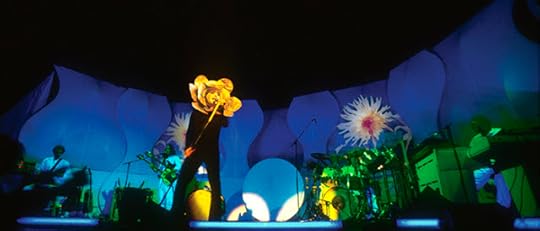
"Part of the reason that the English progressive rock bands of the early 1970s drew from such varied influences was the wide variety of music broadcast on British radio prior to the deregulation of the airwaves [which may explain the lack of progressive rock in America]. Today, many stations only play one style of music, and I suspect the people who grow up listening to this stuff may be subject to less-wide musical tastes than the ones that we had while developing our musical base. We were listening to blues, rock and jazz from America, and we were also hearing our European roots, all on the same station."
An essential ingredient in the Genesis sound that was shared by other progressive rock bands was the use of the Mellotron, an electro-mechanical ancestor of the modern synthesizer, to achieve an orchestral sound. "We weren't trying to sound classical, but the spooky, eerie quality of the Mellotron flutes and violins became a big part of our sound. I was in love with the sound of it for a very long time — although they were incredibly temperamental and took four men to lift, like pallbearers." Peter Gabriel also played flute with the band, adding yet another dimension to the sound. Faux harpsichords and orchestras aside, however, there are musical passages on Nursery Cryme that are as prototypically heavy metal as anything by Black Sabbath or Led Zeppelin. "Sometimes I'd be playing distorted rock guitar weaving through these delicate textures, so I had to play very quietly," said Hackett. "I'd be playing pastoral rock guitar, if that’s not an oxymoron. Often I had to play almost like a reed instrument. At times, I even tried to sound like a synthesizer or like a voice."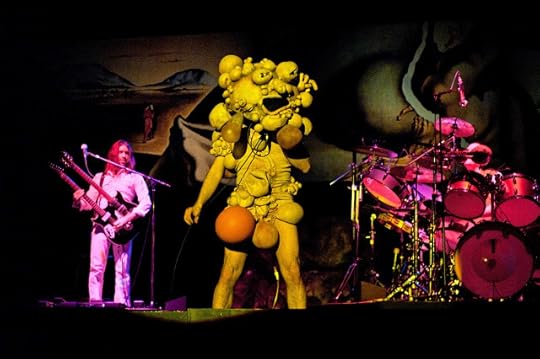
Lyrically, Genesis shied away from "the mating ritual," as Hackett dryly put it, in favor of fairy tales and mythology—a direct contrast to the approach that the Rolling Stones and other English groups were taking at the time. Some critics complained that the band's lyrical approach felt more like research than soul-searching. "It's not that we weren't writing romantic music," says Hackett. "It was just romantic in a different way—we were romancing something else. Our lyrics were often third-hand and not based on personal experience, which is quite typical of the progressive approach. These were early days, and we took a lot from literature." Interestingly, Hackett is in error stating that they weren't creating "romantic" music. This was romance in the true sense of the word, in literature it would be called "chivalric romance," and encompassed the marvel-filled colorful eras of knights and armor, of dragons and damsels in distress. (Bernie Taupin's lyrics for Elton John are the atypical modern version of romance, particularly on Goodbye Yellow Brick Road, which is filled with songs on Western heroes and painted ladies and sleazy Saturday nights).
The classic Genesis line-up of Peter Gabriel, Phil Collins, Steve Hackett, Tony Banks and Mike Rutherford lasted but a few years, but those years were rich in complexity, indeed like Stone Soup.

But Genesis pushed the boundaries of rock both lyrically and instrumentally with fantastic, often bizarre lyrics; long, thematic tracks; an obvious classical influence and departure from blues-based traditions; and unparalleled musical virtuosity (and long before Yes and ELP). The band wed the heaviest jams of the day to acoustic, pastoral passages to create a tapestry of light and shade. "Our idea of a guitar-based tune," recalled guitarist Steve Hackett, "usually meant that the 12-string [acoustics] carried it. Often we would have three 12-string guitars playing at once — Mike, Tony and me — which created a sound like a harpsichord, and you couldn't really pin down what you were hearing. Mike Rutherford was very into Joni Mitchell at the time, which also influenced our acoustic side." Hackett, who began his musical journey as a blues harmonica player, continued, "I grew up listening to the blues and Bach, and I never thought that they would meet and create a third thing. The two styles seemed to be at odds with each other."
Nursery Cryme explored odd time signatures, modal compositions, and introduced a new technique to rock music that would redefine electric guitar playing in the next decade: two-handed tapping. "I came upon the tapping technique when I was trying to play Bach’s famous Toccata and Fugue," said Hackett. "I realized that I couldn't play it the way I wanted to hear it using standard technique, so I started tapping onto the fretboard with my right hand. I used that technique all over Nursery Cryme including parts of 'The Musica Box' and 'The Return of the Giant Hogweed.'" Tony Banks sometimes harmonized Hackett's legato lead guitar lines on the keyboard for dramatic effect using a distorted amplifier or fuzz box to achieve a similar sound. "We had a guitarist who was trying to sound like a keyboard player and a keyboard player who was very good at sounding like a guitarist," Hackett observed.

"Part of the reason that the English progressive rock bands of the early 1970s drew from such varied influences was the wide variety of music broadcast on British radio prior to the deregulation of the airwaves [which may explain the lack of progressive rock in America]. Today, many stations only play one style of music, and I suspect the people who grow up listening to this stuff may be subject to less-wide musical tastes than the ones that we had while developing our musical base. We were listening to blues, rock and jazz from America, and we were also hearing our European roots, all on the same station."
An essential ingredient in the Genesis sound that was shared by other progressive rock bands was the use of the Mellotron, an electro-mechanical ancestor of the modern synthesizer, to achieve an orchestral sound. "We weren't trying to sound classical, but the spooky, eerie quality of the Mellotron flutes and violins became a big part of our sound. I was in love with the sound of it for a very long time — although they were incredibly temperamental and took four men to lift, like pallbearers." Peter Gabriel also played flute with the band, adding yet another dimension to the sound. Faux harpsichords and orchestras aside, however, there are musical passages on Nursery Cryme that are as prototypically heavy metal as anything by Black Sabbath or Led Zeppelin. "Sometimes I'd be playing distorted rock guitar weaving through these delicate textures, so I had to play very quietly," said Hackett. "I'd be playing pastoral rock guitar, if that’s not an oxymoron. Often I had to play almost like a reed instrument. At times, I even tried to sound like a synthesizer or like a voice."

Lyrically, Genesis shied away from "the mating ritual," as Hackett dryly put it, in favor of fairy tales and mythology—a direct contrast to the approach that the Rolling Stones and other English groups were taking at the time. Some critics complained that the band's lyrical approach felt more like research than soul-searching. "It's not that we weren't writing romantic music," says Hackett. "It was just romantic in a different way—we were romancing something else. Our lyrics were often third-hand and not based on personal experience, which is quite typical of the progressive approach. These were early days, and we took a lot from literature." Interestingly, Hackett is in error stating that they weren't creating "romantic" music. This was romance in the true sense of the word, in literature it would be called "chivalric romance," and encompassed the marvel-filled colorful eras of knights and armor, of dragons and damsels in distress. (Bernie Taupin's lyrics for Elton John are the atypical modern version of romance, particularly on Goodbye Yellow Brick Road, which is filled with songs on Western heroes and painted ladies and sleazy Saturday nights).
The classic Genesis line-up of Peter Gabriel, Phil Collins, Steve Hackett, Tony Banks and Mike Rutherford lasted but a few years, but those years were rich in complexity, indeed like Stone Soup.
While Henry Hamilton-Smythe minor was playing croquet with Cynthia Jane De Blaise-William, sweet-smiling Cynthia raised her croquet mallet high and gracefully removed Henry's head. Two weeks later, in Henry's nursery, she discovered his treasured musical box. Eagerly she opened it and as "Old King Cole" began to play a small spirit-figure appeared. Henry returned - but not for long, for as he stood in the room his body began ageing rapidly, leaving a child's mind inside. A lifetime's desires surged through him. Unfortunately the attempt to persuade Cynthia Jane to fulfill his romantic desire led his nurse to the nursery to investigate the noise. Instinctively Nanny hurled the musical box at the bearded child, destroying both.
Published on July 08, 2018 04:32
July 7, 2018
Trespass - Genesis
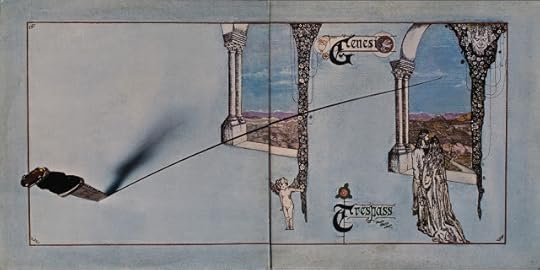 Trespass, released on Oct. 23, 1970, offered the first hints at where Genesis would go, as they began to move away from their debut's more pop-oriented feel. In its place was a newfound focus on balancing bucolic, folk-based sounds with more direct rock attitude. That would remain a part of Genesis' central sound for much of the next decade, even as the group was riven by change. And yet Trespass remains largely forgotten.
Trespass, released on Oct. 23, 1970, offered the first hints at where Genesis would go, as they began to move away from their debut's more pop-oriented feel. In its place was a newfound focus on balancing bucolic, folk-based sounds with more direct rock attitude. That would remain a part of Genesis' central sound for much of the next decade, even as the group was riven by change. And yet Trespass remains largely forgotten.The album also marked the arrival of cover artist Paul Whitehead, who would also handle the covers for 1971's Nursery Cryme and 1972's Foxtrot. By then, however, co-founding guitarist Anthony Phillips had departed, not long after drummer John Mayhew — adding to the sense that Trespass was nothing more than a transitional moment, a precursor.
That's not the way it started out. Genesis entered the studio to record the project in the summer of 1970 having hammered themselves into shape with a merciless touring schedule, not unlike The Beatles. Playing nightly, a sound began to emerge.
"There was a huge, lost world of material in between, as we went from our school-boy holiday song-based album through similar songs, but more mature, through to our first experiments with longer forms," Anthony Phillips said. "Tony began using the organ, as we left [original Genesis producer] Jonathan King's more commercial song-based stable. Then, there were long jams, with heavier riff ideas — like 'Knife,' etc. We had to raise the tempo and power to get noisy crowds to listen when we ventured out on the road! In short, we went from songwriters who played a bit on an album to a fully equipped, fighting-force live band."
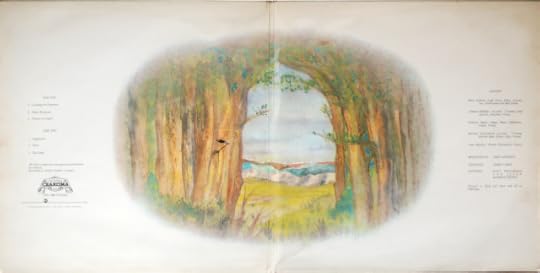
Trespass, though, struggled to No. 98 in the UK and didn't chart at all in America. (In fact, Genesis' first Billboard placement wouldn't arrive until 1973, when Gabriel's penultimate album Selling England by the Pound reached No. 70.) The pressure began to settle onto Phillips, who was overcome with a crushing bout of stage fright.
"Genesis, in its inception, was very much two sets of composers — the keyboard lobby of Banks and Gabriel, and the guitar one — myself and Mike," Phillips says. "All were equals, though Peter eventually probably dictated band directions more — because he was, oddly enough, the more practical, realistic one who would sit for hours on the phone, calling to agents and getting gigs whilst the rest of us were totally absorbed in our art."
Following the departure of Phillips, Genesis emerged radically different than it had been before. Steve Hackett stepped in for Phillips while Phil Collins replaced John Mayhew. In time, much of Genesis' work from the Gabriel period became belatedly celebrated. The group even earned induction into the Rock and Roll Hall of Fame, but Trespass hasn't enjoyed that kind of critical reevaluation. It remains, in many ways, an album without an audience — more famous for what it mapped out than for anything it accomplished.
Rock criticism has always had contempt for anything that was not completely utilitarian. Three chords and a gob of spit would get you a Village Voice rave, while anything high concept or classically influenced was lambasted as pretentious, pompous, or bombastic. Sadly, they just don't make bands (or albums) like this anymore. Don't miss it. It is a history lesson unto itself.
Published on July 07, 2018 06:31
"Supper's Ready" - Genesis
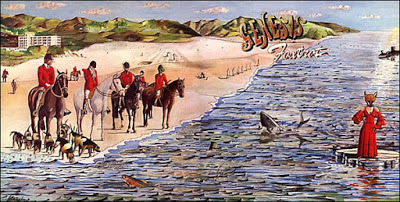 In September 1972, Yes released Close to the Edge. Hot on its heels was Genesis' Foxtrot. AM has extolled the triad virtues of Yes (The Yes Album, Fragile and Close to the Edge) and Jethro Tull (Aqualung, Thick as a Brick and A Passion Play), but glossed over the trilogy that represents Genesis at its best (Nursery Cryme, Foxtrot, Selling England By the Pound). By this time, the classic line-up that included new drummer and vocalist Phil Collins, and recent recruit Steve Hackett on guitars, had already put together 1971's Nursery Cryme which defined the Genesis format longer, seamless pieces, capturing an English sensibility and humor, as well as a sense of the theatrical. That format carried on and was perfected on both Foxtrot and Selling England By the Pound (the longest song on the overreaching Lamb Lies Down on Broadway was a paltry 8 minutes).
In September 1972, Yes released Close to the Edge. Hot on its heels was Genesis' Foxtrot. AM has extolled the triad virtues of Yes (The Yes Album, Fragile and Close to the Edge) and Jethro Tull (Aqualung, Thick as a Brick and A Passion Play), but glossed over the trilogy that represents Genesis at its best (Nursery Cryme, Foxtrot, Selling England By the Pound). By this time, the classic line-up that included new drummer and vocalist Phil Collins, and recent recruit Steve Hackett on guitars, had already put together 1971's Nursery Cryme which defined the Genesis format longer, seamless pieces, capturing an English sensibility and humor, as well as a sense of the theatrical. That format carried on and was perfected on both Foxtrot and Selling England By the Pound (the longest song on the overreaching Lamb Lies Down on Broadway was a paltry 8 minutes)."Supper’s Ready" would surpass all of the longer form pieces they'd done, in many ways becoming the culmination of all of the longer pieces from 1970's pastoral and atmospheric “Stagnation”, to the vividly disturbing themes found in 1971's "The Musical Box." Clocking in at 23 minutes, "Supper's Ready" is an epic track in the grand tradition of early 70s prog. It's origins come from a reading of the Book of Revelation with Magogs and dragons coming out of the sea providing the prominent imagery. But, it also came from a frightening experience that singer Peter Gabriel and his then-wife Jill experienced one evening while having a late-night conversation at the home of Jill's parents, along with producer and friend John Anthony.

Gabriel: It was one night at Jill's parents' house in Kensington when everyone had gone to bed… we'd just been talking to John… there's this strange room in the house in Kensington… I can never sleep there. It was decorated in turquoise and purple which are colors that are both quite high in the frequency range, and I think it was like an echo chamber for what was going on. It was late at night, and we were tired and all the rest, so it was quite easy for us to hallucinate or whatever… we hadn't been drinking or drugging, but… there was this girl who was an old girlfriend of John's and was trying to get back at him or something, and she was into magic and that sort of thing…
Anthony: Jill and I were having a conversation about power and strength and will. Suddenly I was aware that the whole room's atmosphere had changed, Jill had gone into some sort of trance. Suddenly the windows blew in, followed by extreme cold, followed by this psychic phenomenon.
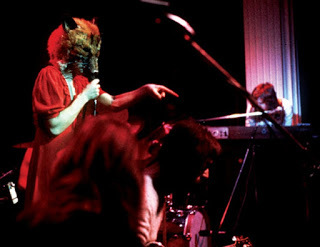 PG: … [Jill and I] saw other faces in each other, and I was very frightened, in fact. It was almost as if something else had come into us, and was using us as a meeting point. The curtain flew wide open, though there was no wind, and the room became ice cold…
PG: … [Jill and I] saw other faces in each other, and I was very frightened, in fact. It was almost as if something else had come into us, and was using us as a meeting point. The curtain flew wide open, though there was no wind, and the room became ice cold… JA: Neither Peter, Jill, or I were doing drugs or drinking. I realized it was a basic manifestation. I have seen it before, the room was full of cold astral smoke, psychic ether. The thing that scared me was that it started moving in the form of a tourbillion – the great wheel that projects spirits into the astrosphere. It is nothing to do with death. It is a phenomenon that can occur with people with strong psyches. If you go through one there is a good chance that if you come back you will never be the same.
PG: And I did feel that I saw figures outside, figures in white cloaks, and the lawn I saw them on wasn't the lawn that was outside. It was just like a Hammer horror film, except it was for real… I was shaking like a leaf and in a cold sweat. ..Jill suddenly became a medium, and started spouting in a different voice… and it is very strange when someone you live with suddenly starts talking with another voice, and eventually, I made a cross with a candlestick and something and held it up to Jill when she was talking in this voice… she sort of reacted like a wild animal. John and I had to hold her down. And the rest of the night we eventually quietened her down, and made her a cup of tea, and tried to talk her through. Then she slept downstairs in the sitting room, but neither I nor John slept a wink that night. Anyway, that's how I got into thinking about good and evil, and forces working against each other. That's the sort of thing that Supper's Ready was… fed on. This was the thing, you see. This is why I was put into this state of mind really, only because the cross had worked. The cross, as a thing, meant nothing to me. I did it because I had seen horror films, and… just anything really that might have worked. I had experienced a sense of evil at that point – I don't know how much of this was going on inside my head and how much was actually happening, but it was an experience I could not forget and was the starting point for a song about the struggle between good and evil.
In the light of that, the idea of "supper" is a pretty mundane and ordinary concept and an odd title to a song so epic in scale. But, supper is also an intimate ritual, a nurturing act, one that is ultimately connected to the Last Supper and in that to the Apocalypse. It's about the battle against good and evil on a cosmic scale, and about being connected to something greater than oneself.
The track is divided into seven seamless sections. Gabriel goes straight to the lyric for "Lovers Leap" without any introduction delivering a beautiful vocal and melody with a musical backdrop that features a tinkly Hohner pianet, acoustic twelve string guitars, a cello, a flute and bass pedals which were used quite heavily throughout the album by Rutherford. "The Guaranteed Eternal Sanctuary Man" is a slightly harder faster piece with the first drum contributions by Collins, who was limited to cymbals, triangles and a bell in scene 1. Gabriel's vocal is much harder and in more of a rock style than the gentle folkiness of the opener, a short reprise of which leads into "Ikhnaton and Itsacon and Their Band of Merry Men," a full-blown rock song with a guitar solo and some classic prog interplay with Kaye's distinctive keys.
"How Dare I Be So Beautiful" is based on the Greek myth of Narcissus. At the end of the piece, the lyric suggests a transformation into a flower, to which Gabriel responds quizzically in the voice of a different character, "A flower ?" which leads utterly into "Willow Farm," with lyrics, vocals, and characterizations from Gabriel at his most vaudevillian. How can one not see the humor in lines like "Mum to mud to mad to dad", "Dad Diddley office" and "Mum diddley washing" etc. (like Kate Bush in "Mrs. Bartolozzi" who sings so gloriously and with such meaning about intermingled laundry: "Slooshy sloshy/ slooshy sloshy/ Get that dirty shirty clean").
"Apocalypse in 9/8" is the heaviest segment featuring a powerful vocal from Gabriel and some pretty severe and complex playing from the band, leading to a further reprise of the "Lovers Leap," where Gabriel reverts to the gentler melody and vocal delivery of that opener but over the chord progression of the second part of the song "The Guaranteed Eternal Sanctuary Man." The juxtaposition is striking. "As Sure As Eggs Is Eggs" provides a powerful ending with Gabriel's William Blake-inspired lyrics (which may also nod in the direction of Shelley with the King of Kings reference) belting out over pretty heavy instrumentation. The fade-out was always a concern for me (as it was in Firth of Fifth); my only criticism of the suite being the song's lack, after 23 minutes, of a proper ending. "Supper's Ready" is all over the place, while ultimately focused – that, of course, is the definition of epic. As if under the opiate of Buñuel, this grand crusade, with its mountains of humanity, psychotropic flowers, an enchanted farmhouse, an apocalypse, and finally, a triumphant arrival to the New Jerusalem, is powerful, funny, serious, burlesque, magical, mysterious, lunar, dark, bursting with light, ridiculous, and serious. Whew, all that in 23 minutes.
Published on July 07, 2018 04:43
July 6, 2018
In the Beginning - Genesis - 1967
 The founding members of Genesis, Peter Gabriel, Tony Banks, Mike Rutherford and Anthony Phillips, met at Charterhouse School in Godalming, Surrey. Gabriel and Banks had arrived at the school in September 1963, Rutherford in September 1964 and Phillips in April 1965. All four found the environment of Charterhouse restrictive, as it favored team sports and scholastic activities that each disliked. Banks had been taking piano lessons since he started prep school aged 7, while Rutherford had been playing guitar since he was 7 and Phillips had already played in a band, the Spiders, before arriving at school. The group evolved from earlier school bands, The Anon (Rutherford and Phillips) and The Garden Wall (Banks and Gabriel), and joined forces in April 1967 in order to record a demo tape. That first line-up consisted of Gabriel on vocals, Phillips on guitar, Banks on keyboards, Rutherford on bass and rhythm guitar and Chris Stewart (drums) and was tentatively called The New Anon.
The founding members of Genesis, Peter Gabriel, Tony Banks, Mike Rutherford and Anthony Phillips, met at Charterhouse School in Godalming, Surrey. Gabriel and Banks had arrived at the school in September 1963, Rutherford in September 1964 and Phillips in April 1965. All four found the environment of Charterhouse restrictive, as it favored team sports and scholastic activities that each disliked. Banks had been taking piano lessons since he started prep school aged 7, while Rutherford had been playing guitar since he was 7 and Phillips had already played in a band, the Spiders, before arriving at school. The group evolved from earlier school bands, The Anon (Rutherford and Phillips) and The Garden Wall (Banks and Gabriel), and joined forces in April 1967 in order to record a demo tape. That first line-up consisted of Gabriel on vocals, Phillips on guitar, Banks on keyboards, Rutherford on bass and rhythm guitar and Chris Stewart (drums) and was tentatively called The New Anon.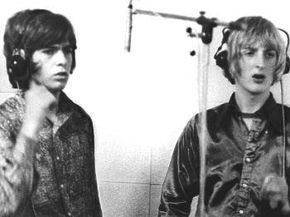 Having recorded a demo containing "Don't Want You Back", "Try A Little Sadness", "She's Beautiful", "That's me", "Listen on Five" and an instrumental, "Patricia," the group wanted to get the songs professionally published and recorded. They would fail to do so until a friend gave Jonathan King the demo who was immediately enthusiastic, later saying "I thought it was fabulous." Under King's advice, the group recorded another demo that led to a recording contract. Charterhouse alumnus Jonathan King had left in 1965 and achieved success in the pop world with "Everyone's Gone to the Moon," the iconic summer hit of 1965 that reached No. 4 on the British charts and No 17 in the U.S.
Having recorded a demo containing "Don't Want You Back", "Try A Little Sadness", "She's Beautiful", "That's me", "Listen on Five" and an instrumental, "Patricia," the group wanted to get the songs professionally published and recorded. They would fail to do so until a friend gave Jonathan King the demo who was immediately enthusiastic, later saying "I thought it was fabulous." Under King's advice, the group recorded another demo that led to a recording contract. Charterhouse alumnus Jonathan King had left in 1965 and achieved success in the pop world with "Everyone's Gone to the Moon," the iconic summer hit of 1965 that reached No. 4 on the British charts and No 17 in the U.S.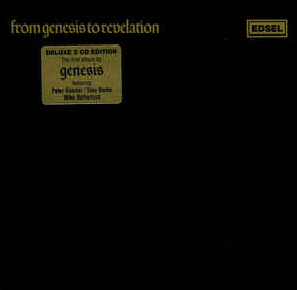 By late 1967, Chris Stewart left the band due to his parents' unwillingness to allow him to drop out of Charterhouse. Stewart was quickly replaced by percussionist John Silver. The group recorded another session at Regent Sound Studio in Denmark Street, London, where they attempted a number of longer and more complex songs, but King was unhappy with these, and advised that the group stick to straightforward pop (retrospectively horrid advice). In response, Banks and Gabriel wrote "The Silent Sun," a pastiche of the Bee Gees, one of King's favorite bands (with Gabriel oddly impersonating Maurice Gibb). The song was chosen to be their first single and was recorded at Regent in December 1967. The group suggested a number of names, including King's suggestion of Gabriel's Angels and Champagne Meadow from Phillips, before taking King's suggestion of Genesis. The single achieved airplay on BBC Radio One and Radio Caroline, but the record didn't sell. A further single, "A Winter's Tale," a somewhat Monkee-esque tribute, was recorded and released in 1968, but it also failed to chart.
By late 1967, Chris Stewart left the band due to his parents' unwillingness to allow him to drop out of Charterhouse. Stewart was quickly replaced by percussionist John Silver. The group recorded another session at Regent Sound Studio in Denmark Street, London, where they attempted a number of longer and more complex songs, but King was unhappy with these, and advised that the group stick to straightforward pop (retrospectively horrid advice). In response, Banks and Gabriel wrote "The Silent Sun," a pastiche of the Bee Gees, one of King's favorite bands (with Gabriel oddly impersonating Maurice Gibb). The song was chosen to be their first single and was recorded at Regent in December 1967. The group suggested a number of names, including King's suggestion of Gabriel's Angels and Champagne Meadow from Phillips, before taking King's suggestion of Genesis. The single achieved airplay on BBC Radio One and Radio Caroline, but the record didn't sell. A further single, "A Winter's Tale," a somewhat Monkee-esque tribute, was recorded and released in 1968, but it also failed to chart. Though the singles didn't sell, King felt the group's songwriting and sound might be better suited to an album. The result, From Genesis to Revelation, was recorded over a ten day period in August 1968 and released in March 1969 on Decca Records. King assembled the tracks as a concept album, which he produced, while Arther Greenslade added its pretentious and overstated string arrangements, oddly mixed quietly in the background. The band were unhappy with the presence of the strings, which they felt swamped the rest of the instruments, despite the understated mix. The album omitted the group's name as Decca noticed there was another group in the U.S. called Genesis, and simply listed the title on a black cover. The album sold a dismal 649 copies and Genesis split with both Decca and King, who continues to hold the rights to the album, reissuing it several times under a variety of names (seven that I count). The band have since given a negative view of the album and have been embarrassed by its re-releases. Although dismissed by the band, From Genesis to Revelation is a statement of who Genesis would become. There are bright spots that point toward Trespass, and even some glimpses of Nursery Cryme, but the LP tended more toward a stoic and static psychedelia, miring itself in the 60s. Still, it was at about this time that Gabriel, becoming more accustomed to performing, began to adopt the costumes and personas that would grace Genesis' best years, from Trespass to The Lamb Lies Down on Broadway. Genesis was indeed something new.
Though the singles didn't sell, King felt the group's songwriting and sound might be better suited to an album. The result, From Genesis to Revelation, was recorded over a ten day period in August 1968 and released in March 1969 on Decca Records. King assembled the tracks as a concept album, which he produced, while Arther Greenslade added its pretentious and overstated string arrangements, oddly mixed quietly in the background. The band were unhappy with the presence of the strings, which they felt swamped the rest of the instruments, despite the understated mix. The album omitted the group's name as Decca noticed there was another group in the U.S. called Genesis, and simply listed the title on a black cover. The album sold a dismal 649 copies and Genesis split with both Decca and King, who continues to hold the rights to the album, reissuing it several times under a variety of names (seven that I count). The band have since given a negative view of the album and have been embarrassed by its re-releases. Although dismissed by the band, From Genesis to Revelation is a statement of who Genesis would become. There are bright spots that point toward Trespass, and even some glimpses of Nursery Cryme, but the LP tended more toward a stoic and static psychedelia, miring itself in the 60s. Still, it was at about this time that Gabriel, becoming more accustomed to performing, began to adopt the costumes and personas that would grace Genesis' best years, from Trespass to The Lamb Lies Down on Broadway. Genesis was indeed something new.
Published on July 06, 2018 04:59
July 5, 2018
Fripp and Gabriel - Here Comes the Flood - Frippertronics
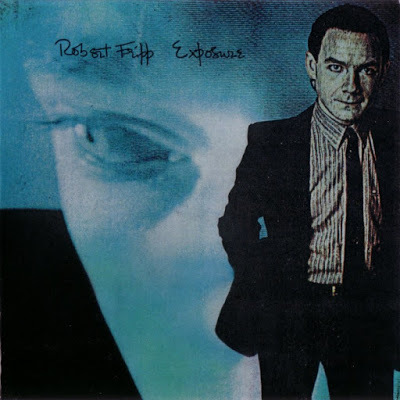 By 1975, Peter Gabriel and Robert Fripp had already left their respective gigs, Genesis and King Crimson. Somehow the two ended up in the same studio with the likes of Sandy Denny, Keith Tippett, Percy Jones (of Brand X) and Phil Collins, which proved the catalyst to Gabriel's on the spot, "You Never Know." Fripp played a simple guitar accompaniment, a unique occurrence in his session catalog, and later said of the peculiar occurrence: "This was arguably the strangest session of the entire era." The session, and the song it produced, long forgotten in the annals of music history, was significant for the mere reason that it sparked a series of encounters between Gabriel and Fripp, from Gabriel's first solo records to "Here Comes The Flood," in all its iterations, both live and in the studio.
By 1975, Peter Gabriel and Robert Fripp had already left their respective gigs, Genesis and King Crimson. Somehow the two ended up in the same studio with the likes of Sandy Denny, Keith Tippett, Percy Jones (of Brand X) and Phil Collins, which proved the catalyst to Gabriel's on the spot, "You Never Know." Fripp played a simple guitar accompaniment, a unique occurrence in his session catalog, and later said of the peculiar occurrence: "This was arguably the strangest session of the entire era." The session, and the song it produced, long forgotten in the annals of music history, was significant for the mere reason that it sparked a series of encounters between Gabriel and Fripp, from Gabriel's first solo records to "Here Comes The Flood," in all its iterations, both live and in the studio. By 1974, King Crimson was reduced to a trio, losing Greg Lake, Ian McDonald, and lyricist, Pete Sinfield. That left only Fripp, former Yes drummer Bill Bruford, and John Wetton. Despite Bruford's discontent and the seeming breakup of the rest of the band, the trio managed to record Red, a reasonably iconic if often overlooked LP. In Melody Maker in 1979 Fripp recalled: "My ego went. I lost my ego for three months. We were recording Red and Bill Bruford would say, 'Bob – what do you think?' And I'd say, 'Well' – and inside I’d be thinking how can I know anything? Who am I to express an opinion? And I’d say – ‘Whatever you think, Bill. Yes, whatever you like.'" Interesting what comes out of duress at times.
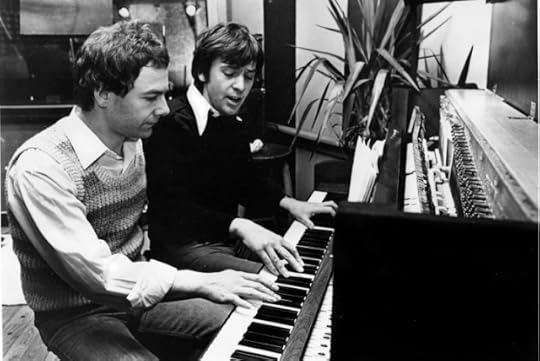
Peter Gabriel left Genesis in 1975 after the Lamb Lies Down On Broadway tour. He took time off from music in the latter part of the year and then surfaced on two musical projects. The first was the impromptu session mentioned above, the second was the soundtrack to the obscure film All This And World War 2, a bizarre marriage of Beatles' covers with footage of WW2 newsreels and films. The film tanked, expectedly, but the soundtrack faired much better. It included an interesting version of "Strawberry Fields Forever" performed by Gabriel.
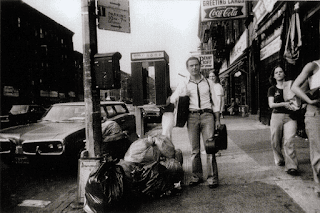 Peter wrote "Here Comes The Flood" shortly after leaving Genesis, and while stylistically he wanted to get as far from the band as possible, he used past and current band members to rehearse, including Anthony Phillips, who left Genesis in 1970. Phillips recalls, "I remember doing 'Here Comes The Flood.' We were back in Trident studios where we had done Trespass, playing at the piano that the Beatles had recorded Hey Jude'' on. It went very well. I always got on well with Peter. He was full of talk about the future and what we were currently listening to. Although he used Mike [Rutherford] and Phil [Collins], essentially it was a new broom for Peter…John Goodsall [Brand X again], nice chap, slightly eccentric, was on guitar."
Peter wrote "Here Comes The Flood" shortly after leaving Genesis, and while stylistically he wanted to get as far from the band as possible, he used past and current band members to rehearse, including Anthony Phillips, who left Genesis in 1970. Phillips recalls, "I remember doing 'Here Comes The Flood.' We were back in Trident studios where we had done Trespass, playing at the piano that the Beatles had recorded Hey Jude'' on. It went very well. I always got on well with Peter. He was full of talk about the future and what we were currently listening to. Although he used Mike [Rutherford] and Phil [Collins], essentially it was a new broom for Peter…John Goodsall [Brand X again], nice chap, slightly eccentric, was on guitar." With the exception of Gabriel's flute contribution on "Katmandu" from Cat Stevens' "Mona Bone Jakon," and the vocals for Colin Scot's eponymous LP from 1971 (which also included Collins, Fripp, Wakeman, Jon Anderson and Peter Hammill), Gabriel had never really ventured away from the comfort of Genesis.
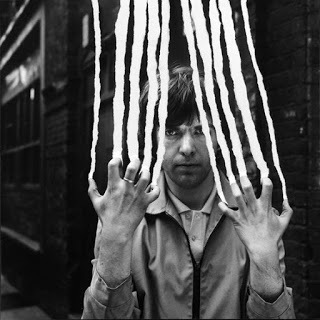 While Gabriel had Todd Rundgren in mind as he eased his way into his first solo outing, a meeting between the two lacked the spark the Gabriel sought. His next choice was Bob Ezrin, whose work included Billion Dollar Babies for Alice Cooper and Lou Reed's Berlin. Ezrin recruited studio musicians Allan Schwartzberg, Jimmy Mealen, Larry Fast (Kate Bush's Never for Ever) and bassist Tony Levin. That troupe, joined by Fripp, spent the next six months writing and recording Gabriel's debut, which of course includes "Solisbury Hill," "Moribund the Burgermeister" and of course "Humdrum" and "Here Comes the Flood."
While Gabriel had Todd Rundgren in mind as he eased his way into his first solo outing, a meeting between the two lacked the spark the Gabriel sought. His next choice was Bob Ezrin, whose work included Billion Dollar Babies for Alice Cooper and Lou Reed's Berlin. Ezrin recruited studio musicians Allan Schwartzberg, Jimmy Mealen, Larry Fast (Kate Bush's Never for Ever) and bassist Tony Levin. That troupe, joined by Fripp, spent the next six months writing and recording Gabriel's debut, which of course includes "Solisbury Hill," "Moribund the Burgermeister" and of course "Humdrum" and "Here Comes the Flood."After the release of PG1 in January 1977, Gabriel said "It's a sort of flood of the mind, a telepathic flood, which some people are able to swim, and others not. The situation where those people, who cut themselves off as islands, not being honest with themselves or with other people, will be bombarded by other people’s thoughts and other people reading their own minds and the people who have been open and straightforward would be no different."
Simultaneously, Fripp had been in spiritual discovery mode (following in the pathway of George Gurdjieff), spent the better part of '75 and early '76 touring with Brian Eno, and after which joined the session players on Gabriel's Car (the unofficial title of PG1), as well as the live performances that followed its release. Fripp stated, "I only accepted to be on the tour on the condition that I would be playing in the dark without being seen by the public. My imaginative part was really limited."
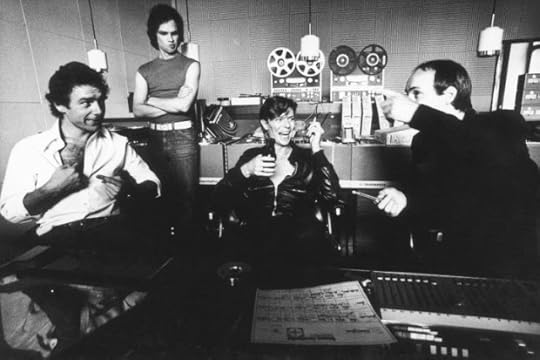 Fripp, Visconti, Bowie, EnoThen, in July 1977, Fripp got a call from Brian Eno, who was working with Bowie in Berlin on the follow up to Low. Alongside producer Toni Visconti at Hansa studio, the pair needed legit rock licks for a number of the songs. Eno didn't think twice before calling Fripp, who came in and recorded the first thing that came into his mind while listening to early takes of tracks like "Beauty and the Beast" and "Heroes," which ended up as multiple Fripp guitar tracks edited by Visconti. It was also in '77 that Fripp worked with Daryl Hall on his first solo LP, Sacred Songs, after relocating to New York. New York, of course, was in the throes of the CBGB scene with artists like Blondie and Talking Heads, who likewise sought out Fripp's expertise and innovation.
Fripp, Visconti, Bowie, EnoThen, in July 1977, Fripp got a call from Brian Eno, who was working with Bowie in Berlin on the follow up to Low. Alongside producer Toni Visconti at Hansa studio, the pair needed legit rock licks for a number of the songs. Eno didn't think twice before calling Fripp, who came in and recorded the first thing that came into his mind while listening to early takes of tracks like "Beauty and the Beast" and "Heroes," which ended up as multiple Fripp guitar tracks edited by Visconti. It was also in '77 that Fripp worked with Daryl Hall on his first solo LP, Sacred Songs, after relocating to New York. New York, of course, was in the throes of the CBGB scene with artists like Blondie and Talking Heads, who likewise sought out Fripp's expertise and innovation.Fripp enjoyed working with Hall so much he planned his next LP with Daryl doing all the vocals. That plan though was squelched by Hall's record company and only two songs survived; one of them, "North Star," with Phil Collins, Tony Levin, Brian Eno, Fripp and Sid McGinnis on pedal steel guitar. At the end of '77, Gabriel and Fripp got together again to work on Gabriel's second solo album (PG2 - Scratch), this time with Fripp as producer. The album included the song "Exposure," which would be recorded again with Terre Roach singing her heart out for Fripp's album and becoming the title song for it. In the same way that Woody Allen isn't a fan of what is arguably his best film (Manhattan), Gabriel wasn't particularly fond of Scratch (my fave PG LP) stating, "Fripp is probably still my favorite guitar player, but as a producer, I don't think it worked very well. Neither he nor I ended up that satisfied with the second album."
 In the October '78 show at the Bottom Line in New York, Gabriel, Fripp et al played "Here Comes The Flood" as an encore. Both "Exposure" and "Here Comes the Flood" showcased the guitar soundscapes that Fripp developed with Brian Eno. At the time, the process to produce the sound involved two Revox tape recorders, a technique for which Brian Eno provided a diagram on the Discreet Music album cover. Eno and Fripp had first showcased their use of the method, known as Frippertronics, on the album No Pussyfooting in 1972, with the side-long track "The Heavenly Music Corporation," a piece Fripp said was the best thing he'd ever done. "I did Frippertronics at the Kitchen in NYC in '78. It was completely improvised music, with two Revoxes. I said to Eno, 'How do you get these Revoxes working?' He drew me a diagram. I said, 'You've just done yourself out of a job."
In the October '78 show at the Bottom Line in New York, Gabriel, Fripp et al played "Here Comes The Flood" as an encore. Both "Exposure" and "Here Comes the Flood" showcased the guitar soundscapes that Fripp developed with Brian Eno. At the time, the process to produce the sound involved two Revox tape recorders, a technique for which Brian Eno provided a diagram on the Discreet Music album cover. Eno and Fripp had first showcased their use of the method, known as Frippertronics, on the album No Pussyfooting in 1972, with the side-long track "The Heavenly Music Corporation," a piece Fripp said was the best thing he'd ever done. "I did Frippertronics at the Kitchen in NYC in '78. It was completely improvised music, with two Revoxes. I said to Eno, 'How do you get these Revoxes working?' He drew me a diagram. I said, 'You've just done yourself out of a job."The recording of "Here Comes The Flood" for Fripp's Exposure LP took place in March 1978. On the album, it is preceded by another Frippertronics track called "Water Music 1." What follows is what most critics find the best-recorded version of the iconic track. Late at night, listening to Gabriel's version, or to Fripp's, I am overwhelmed, not just by the remarkable nature of the recordings, but by what transpired to create them: the time, the luck, the mishaps, and the circumstance, all coalescing into an iconic track for two diverse artists.
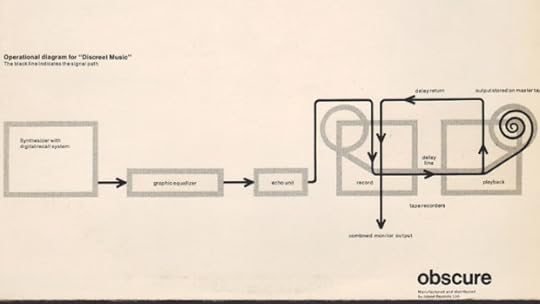
Published on July 05, 2018 04:53
July 4, 2018
Peter Gabriel - Melt
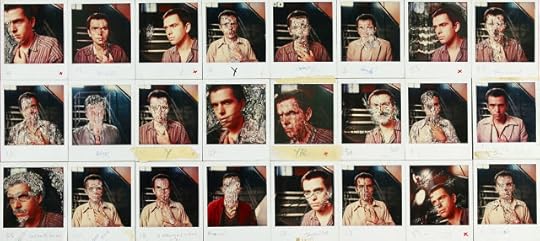
When Peter Gabriel played L.A.'s Greek Theater in the spring of 1980, he was touring PG3 (AM10), although it had not been released. When the lights dimmed, the cacophony of the crowd "melted" into the Burundi beat so prevalent on the album. "Intruder" thundered through the Hollywood Hills. From the back of the theater came a handful of men dressed in black, like thieves in the night, armed with searchlights they shined across the audience. Upon reaching the Greek's stage, a distinctly chilling voice murmured, "I know something about opening windows and doors." The beginning of the concert exemplified the originality and vitality of everything Gabriel was doing at the time. It was the culmination of what began with "Humdrum" (AM10, single); the evolution of Genesis.
When the album was subsequently released, I was blown away all over again (thanks 1980s terminology). It wasn't progressive rock or new wave or post punk, it was indefinable, crossing styles and genres in ways that may not be out of the ordinary today, but were unheard of in the late seventies. I remember devotees of everyone from Joy Division to the Clash or the Jam, the Stones or Kate Bush all embracing it for a myriad of reasons. From the Stunning "I Don't Remember" or "Games Without Frontiers" (feat. Kate Bush) to the haunting "Family Snapshot" and the groundbreaking, world shaking anthem that closes the album, "Biko," every track is superb.
Gabriel impelled production techniques and engineering with the introduction of the Fairlight Programmable Synthesizer, and the list of musicians is exceeded in few places (Joni Mitchell's Court and Spark (AM10), Steely Dan's Aja (AM10)). Fripp, Paul Weller (of The Jam), Tony Levin (King Crimson), Dave Gregory (XTC), Phil Collins, elevate the masterful songwriting and topical, time-sensitive complexities to something greater. "Biko" did more than a little to inform the world of its injustices, but had it been a song merely of protest, its significance today may have waned. Instead, every song maintains its impact. "Family Portrait" isn't about Kennedy, though everyone thinks it is. Doesn't matter. "Family Portrait" is a song that questions our insanities while putting a face to humanity's frailty; a song that doesn't ponder why terrible things happen, but why they don't happen more often; a song made hauntingly more beautiful through its musicianship.
Peter Gabriel is a beautiful, contemporary album. I'm still a bit more partial to PG2 than 3, but that's not AM, that's me thinking back to days gone by. PG2 doesn't make me cry, it makes me reminisce. PG3 makes me stop in my tracks. Even without a "Humdrum," PG3 is an AM10.
Published on July 04, 2018 04:29
July 3, 2018
Peter Gabriel, Vol. 1, No. 2: Scratch
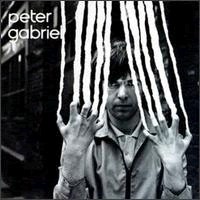 Vol. 1, No. 2 is much darker and far more removed from the overblown Genesis concept The Lamb Lies Down on Broadway than was Car. Here we find tracks of white noise, red heat, purple funk, and colorless loss. "On the Air" blows up with Who-like guitar from Sid McGinnis while glistening synth bells tinkle in the background. Gabriel is playing the part of Mozo (A play on Moses), a pirate radio DJ broadcasting from his amateur radio in a cabin by the river. Mozo is lost and lonely and screaming out via his microphone. He wants everyone to know "that Mozo is here". He is in the world, but not of the world. For the most part hidden and invisible, Mozo can only express himself and be heard with the aid of technology – specifically radio technology. The figure of Mozo lives in a fantasy world created by what he picks up and transmits on short-wave radio. "Through his short-wave radio he becomes whoever he wants, but in real life, on the street, he's totally ignored," explains Gabriel.
Vol. 1, No. 2 is much darker and far more removed from the overblown Genesis concept The Lamb Lies Down on Broadway than was Car. Here we find tracks of white noise, red heat, purple funk, and colorless loss. "On the Air" blows up with Who-like guitar from Sid McGinnis while glistening synth bells tinkle in the background. Gabriel is playing the part of Mozo (A play on Moses), a pirate radio DJ broadcasting from his amateur radio in a cabin by the river. Mozo is lost and lonely and screaming out via his microphone. He wants everyone to know "that Mozo is here". He is in the world, but not of the world. For the most part hidden and invisible, Mozo can only express himself and be heard with the aid of technology – specifically radio technology. The figure of Mozo lives in a fantasy world created by what he picks up and transmits on short-wave radio. "Through his short-wave radio he becomes whoever he wants, but in real life, on the street, he's totally ignored," explains Gabriel.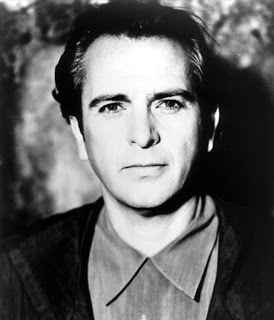 "DIY" is Gabriel's very un-punk sounding tribute to the punk ethos that prevailed in the late 70s. The track is prescient in that it foreshadows much of what is on PG3, if without the confidence. "Mother of Violence" has some of the most achingly moving singing and melodies on the album, though there are many. With just piano, acoustic guitar and McGinnis's steel guitar, this ballad cries.
"DIY" is Gabriel's very un-punk sounding tribute to the punk ethos that prevailed in the late 70s. The track is prescient in that it foreshadows much of what is on PG3, if without the confidence. "Mother of Violence" has some of the most achingly moving singing and melodies on the album, though there are many. With just piano, acoustic guitar and McGinnis's steel guitar, this ballad cries. "A Wonderful Day in a One-Way World" is pop reggae, while "White Shadow" is one of three premiere pieces for both Gabriel and producer Robert Fripp. Fripp's solo at the end of "White Shadow" blisters. One of his best on any record he's appeared; it's underrated at worst and masterful at best. (An aside: on the original LP, the inner grove leaves a gap to allow the last few Frippertronics the opportunity to play over and over; high as a kite in '78 we listened to it for an hour. my good friend Ray said, "Man, this album is long.")
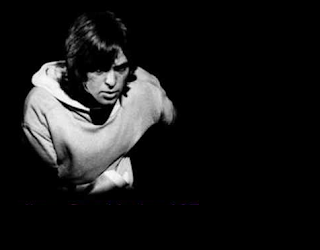 The LP's stunners, alongside "White Shadow," are "Indigo" and "Home Sweet Home." "Indigo" is Gabriel at his lyrical best and Fripp's basic instrumentation, building, stopping, flowing, wrenching, heartbreaking, is clearly a masterpiece. Conversely, the lyrics on "Home Sweet Home" are taken verbatim from a newspaper story Gabriel read about a woman who jumped out of a window with her baby in her arms. The widower used the insurance money he got to gamble at a casino and won big. Life sucks and fate's a cunt here, no other word is apt. But it's Gabriel's voice that makes the song (and makes the album). Near the very end, Gabriel wails. He's not singing any words, he's just wailing and no music before or since makes one’s hair stand up like that, even KB's "Hello Earth," simply because this news report is harrowing.
The LP's stunners, alongside "White Shadow," are "Indigo" and "Home Sweet Home." "Indigo" is Gabriel at his lyrical best and Fripp's basic instrumentation, building, stopping, flowing, wrenching, heartbreaking, is clearly a masterpiece. Conversely, the lyrics on "Home Sweet Home" are taken verbatim from a newspaper story Gabriel read about a woman who jumped out of a window with her baby in her arms. The widower used the insurance money he got to gamble at a casino and won big. Life sucks and fate's a cunt here, no other word is apt. But it's Gabriel's voice that makes the song (and makes the album). Near the very end, Gabriel wails. He's not singing any words, he's just wailing and no music before or since makes one’s hair stand up like that, even KB's "Hello Earth," simply because this news report is harrowing.Interesting that Fripp considers this a part of a trilogy that includes his own solo, Exposure, and Daryl Hall's Sacred Songs. Fripp encouraged Gabriel to work fast and be spontaneous, and although Gabriel was apparently unhappy about being rushed, Fripp restrained him from his instinct towards over-elaboration to great effect. The rather abstract song fragment 'Flotsam and Jetsam' sounds a lot like the material on Fripp's solo album, and, indeed, Gabriel gives a risky but emotional vocal performance on "Exposure," a track also recorded (with a different vocalist) for Fripp's LP. PG3 is considered Gabriel's masterstroke, but after this recent relisten to PG2, I'm not so sure.
Published on July 03, 2018 15:53
July 2, 2018
Humdrum - Peter Gabriel
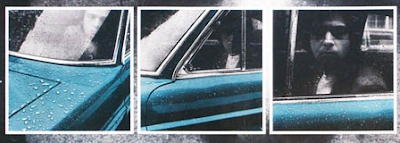 Peter Gabriel's first four albums were meant to be considered four issues of the same magazine; the first (Car) as Vol. 1, No. 1, etc. By analyzing the musical diversity amidst the arrangements and instrumentation, one can readily see the idea come to fruition. I'd immersed myself so much in Kate Bush these past couple weeks that I found myself listening to all of Kate's collaborations, in particular, "You" with Gilmour and Roy Harper and the three with Gabriel, "Another Day," "Games Without Frontiers" and "Don't Give Up." Though I find it unfortunate that "Don't Give Up" was so intently overplayed, I can still find the emotional poignancy that hit me the first time I heard it. At Amnesty, the Kate Bush portion was sung by Tracy Chapman, but I'm particularly partial to the wonderful live version with Paula Cole. (Music’s funny. Hearing "DGU" again with Paula Cole led me to the tantalizing AM10 track "Hush, Hush, Hush," then So, leading me back to PG 1-4. Now I'm listening to Trick of the Tail and Phil Collins – God, dismiss all the hokey idiocy in his canon and give me the melancholy But Seriously and just wow.)
Peter Gabriel's first four albums were meant to be considered four issues of the same magazine; the first (Car) as Vol. 1, No. 1, etc. By analyzing the musical diversity amidst the arrangements and instrumentation, one can readily see the idea come to fruition. I'd immersed myself so much in Kate Bush these past couple weeks that I found myself listening to all of Kate's collaborations, in particular, "You" with Gilmour and Roy Harper and the three with Gabriel, "Another Day," "Games Without Frontiers" and "Don't Give Up." Though I find it unfortunate that "Don't Give Up" was so intently overplayed, I can still find the emotional poignancy that hit me the first time I heard it. At Amnesty, the Kate Bush portion was sung by Tracy Chapman, but I'm particularly partial to the wonderful live version with Paula Cole. (Music’s funny. Hearing "DGU" again with Paula Cole led me to the tantalizing AM10 track "Hush, Hush, Hush," then So, leading me back to PG 1-4. Now I'm listening to Trick of the Tail and Phil Collins – God, dismiss all the hokey idiocy in his canon and give me the melancholy But Seriously and just wow.)  From the first issue of the magazine, though, I have been enamored for 40 years with "Humdrum." It is among my very favorite tracks (as nostalgic as "Ventura Highway," as enigmatic as "Benny and the Jets" and as angst-ridden as "I'm Not in Love"). A tango rhythm, synths-meets-Gallic-accordion, Gabriel’s trademark smoky voice, and a series of musical threads that start in one place and end in another seamlessly, this is a mish-mash that's been a constant (a capital C) in my life since 1975. Indeed it is thematic as the song that I play first in a new home. My youth gone, I'm not as mobile as I once was, moving from studio apartment to loft to some girl's couch. Whatever the schematics, this song was first. Open boxes, things away, sit on the sofa, first time in the new place, "In coal she burn, she burn."
From the first issue of the magazine, though, I have been enamored for 40 years with "Humdrum." It is among my very favorite tracks (as nostalgic as "Ventura Highway," as enigmatic as "Benny and the Jets" and as angst-ridden as "I'm Not in Love"). A tango rhythm, synths-meets-Gallic-accordion, Gabriel’s trademark smoky voice, and a series of musical threads that start in one place and end in another seamlessly, this is a mish-mash that's been a constant (a capital C) in my life since 1975. Indeed it is thematic as the song that I play first in a new home. My youth gone, I'm not as mobile as I once was, moving from studio apartment to loft to some girl's couch. Whatever the schematics, this song was first. Open boxes, things away, sit on the sofa, first time in the new place, "In coal she burn, she burn." One thing "Humdrum" does is to position itself in a cultural context of Europe, full of Valentinas, and “little liebe schoens”, confronting American elements at JFK, and television that cuts a deep incision. After years of ferrying himself this way and that across the Atlantic as in Genesis, I imagine crossing these cultural lines were as familiar to him as lambs lying down on Broadway. But here as well is that references to women and birth, one of the reasons he’d given up being a rock star. His wife Jill had a difficult pregnancy, and his first daughter Anna-Marie had been ill as a newborn. While still in Genesis, he blew off a series of recording sessions and put off a tour in order to be with them: "From the white star,/ Came the bright scar;/ Our amoeba,/My little liebe schoen." This is a song I found so long ago, long before I could possibly understand its width or breadth, when it was mystical at best. I still do not understand, but in these words today I find real life, a real wife, a child and a garden, and I relish in the humdrum.
Published on July 02, 2018 05:24
July 1, 2018
na
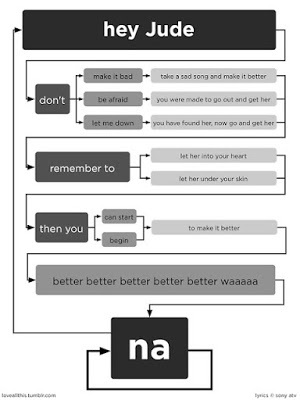 Four and a half years after they first appeared on The Ed Sullivan Show and charmed teenie-boomers with their yeah yeah yeahs, The Beatles released "Hey Jude," a revolutionary and mature track far removed from the mop tops early work, even if it utters the word "na" 240 times.By 1968 the Fab Four's Edwardian suits were long gone, as was the notion that they were simply the flavor-of-the-month. The Beatles ditched live concerts to experiment in the studio, and while they didn't have a stranglehold on the Billboard charts as they did in 1964 (when at one point they had the top five hits), their music remained wildly popular.
Four and a half years after they first appeared on The Ed Sullivan Show and charmed teenie-boomers with their yeah yeah yeahs, The Beatles released "Hey Jude," a revolutionary and mature track far removed from the mop tops early work, even if it utters the word "na" 240 times.By 1968 the Fab Four's Edwardian suits were long gone, as was the notion that they were simply the flavor-of-the-month. The Beatles ditched live concerts to experiment in the studio, and while they didn't have a stranglehold on the Billboard charts as they did in 1964 (when at one point they had the top five hits), their music remained wildly popular."Hey Jude," like "She Loves You," is the story of a friend offering advice, but the world, as well as the music, had grown more complex. Paul McCartney has said he wrote it to cheer up Julian Lennon, John's five-year-old son, when Lennon was divorcing his first wife. The narrator realizes that things may not be good now, but with a little work he can find his true love "and make it better."
Published on July 01, 2018 16:59



